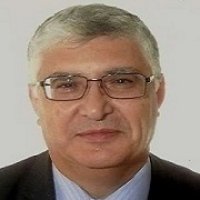Surgery 2025

National Cancer Institute, Italy
Abstract:
Head and neck squamous cell carcinoma (HNSCC) is the sixth most common cancer worldwide with an increasing trend of its incidence. Alcohol consumption, smoking, and viral infections, such as the mucosal high risk (HR) human papillomaviruses (HPVs) are major risk factors for HNSCC development. HPV-driven HNSCC incidence is increasing in Europe and North America, while the incidence of mucosal HR HPV-positive HNSCCs in low-income countries is still low. Tobacco and alcohol consumption, in fact, remain the principal risk factors in these countries. HR HPVs are mainly associated with a subset of oropharyngeal squamous cell carcinoma (OPSCC), while other head and neck sites are marginally affected by HPV infection.Although no identifiable pre-malignant lesions have been characterized for HPV-related HNSCC and no screening programs are available, OPSCC, prevalently associated to HPV 16 infections, in the near future will be prevented by HPV vaccinations programs, slowly implemented also in young men. In the mean time, besides the current development of more effective biomarkers, innovative less invasive de-escalating treatment will be used including Low-Dose Radiation.
Biography:
Franco M. Buonaguro, MD Past-Director Molecular-Biology and Viral-Oncology Unit, Natl Cancer Inst (INT), Naples – ITALY; graduated cum laude in 1977 “Federico II” Medical School Naples – Italy; board certified in Endocrinology (1982), in Microbiology-Virology (1992); Postdoctoral fellow, Dpt Cell Biology, Argonne National Laboratory, IL,USA (1979-81); WHO Fellow and research associate, Tumor Biology Program, FHCRC, Seattle,WA,USA (1983-86), assistant member Viral Oncology, INT; promoted Associate member in 1991, full member in 2001. 2008-2022 Director Molecular Biology and Viral Oncology, AIDS Ref Center, INT. 2020- 24 Director, GVN Italian Center; Founder and Editor-in-Chief Infectious Agents and Cancer: Publications' 260-Documents, 49-H-Index.
